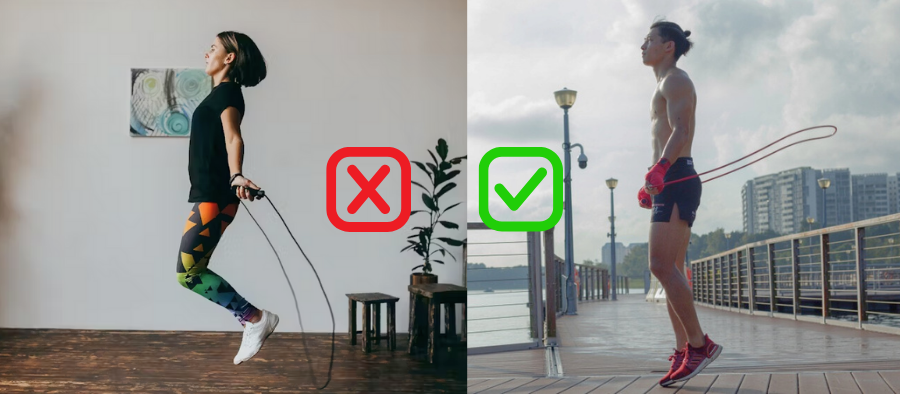
Learn Proper Jump Rope Form: Smarter not Harder
Share
Jump rope is an amazing workout, but like any exercise, poor technique can lead to unnecessary strain or injury. Most common jump rope injuries—such as shin splints, calf strain, patellar tendonitis, plantar fasciitis, Achilles tendon strain, or ankle joint pain—are often the result of overexertion and bad form.
The good news? With the right technique and preparation, you can enjoy all the benefits of jumping rope while keeping your body safe.
Key Tips for Safe and Effective Jump Rope:
Keep your jumps low and relaxed
Avoid bending your knees too much. High, deep jumps increase impact on the joints. Instead, stay light on your feet, legs straight but relaxed, and use small bounces driven mainly by your calves.
Use proper arm position
Many beginners keep their arms too wide, which makes the exercise harder, overworks the shoulders, and tires out the arms. The correct way: elbows close to the body, arms slightly open in a natural stance, hands at waist height, and only a light wrist rotation to swing the rope.
Warm up and do joint mobility
As with any workout, always warm up first. A few minutes of light cardio and mobility drills help prepare your muscles and joints, lowering the risk of injury.
Listen to your body
Stop if you feel sharp pain or swelling in your knees, ankles, or calves. Progress gradually instead of pushing too fast too soon.
Posted on 4 September, 2025 by Abi Ruiz
